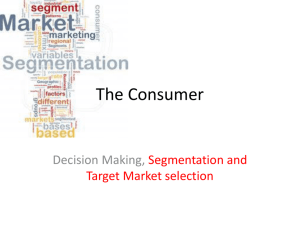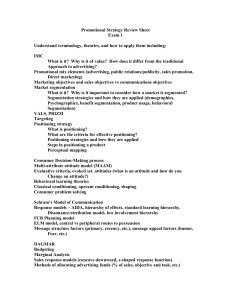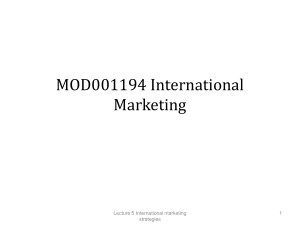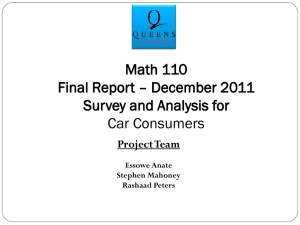Differentiation
advertisement
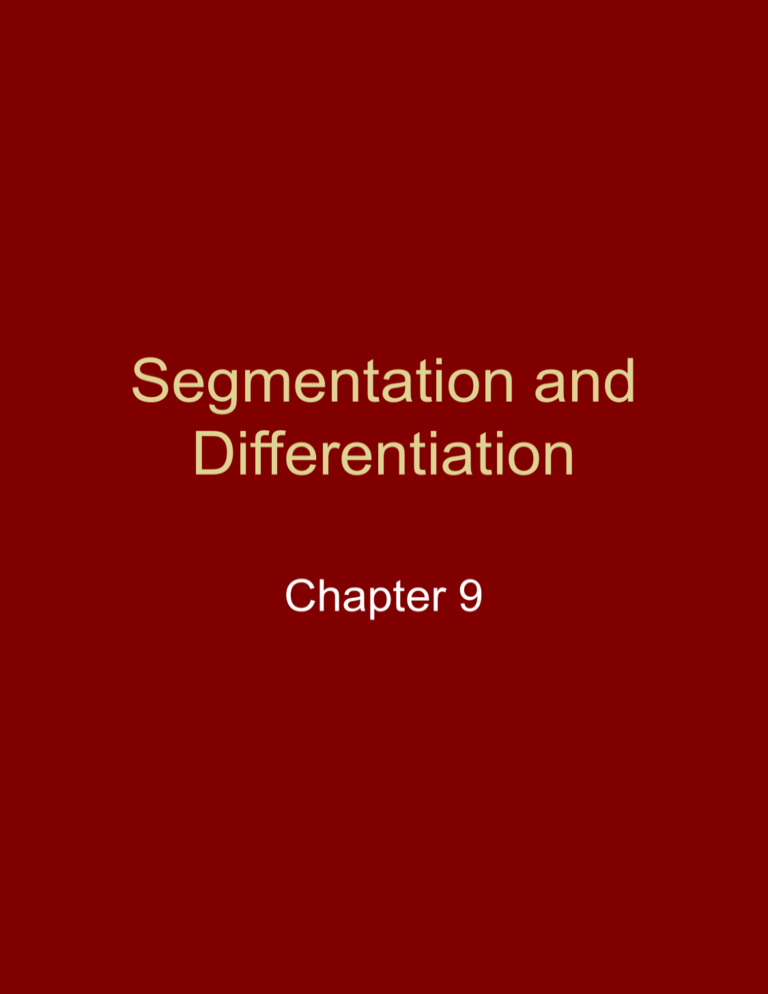
Segmentation and Differentiation Chapter 9 Segmentation • Target marketing requires: – Identify and profile distinct groups of buyers who might require separate marketing mixes – Select one or more segments to enter – Establish and communicate the product’s key benefits to the market What is a Target Market? • Group of people which a firm designs, implements and maintains a marketing mix intended to meet the needs of the group. • Options include: – Undifferentiated strategy – Concentrated strategy – Multisegment strategy Market Segments • Segments v. sectors • Segment: subgroup of people sharing 1+ characteristics that cause them to have similar product needs • Market segmentation: process of dividing a market into a meaningful relatively similar groups. Criteria for segmentation • • • • • Measurable Substantial Accessible Responsiveness/Actionable Differentiable Bases for Segmentation • Geography: region, market size, climate etc. • Demographics: age, gender, income, ethnic background, family life cycle • Psychographic: personality, motives, lifestyles, values • Benefit: what consumers get out of it; occasions, benefits, user status, usage rate, loyalty • Usage rate: 80/20 rule, new users, medium users etc. Benefit Segmentation Group activity • Candy segmentation exercise Making your Product Stand Out: Positioning and the Art of Differentiation Based in part on Differentiate or Die: Survival in Our Era of Killer Competition Jack Trout It’s all in your head… • Differentiation takes place in the mind. • Minds are limited and can’t cope with a lot of information • Minds hate confusion and love simplicity • Minds are insecure and buy what others buy • Minds can lose focus • MINDS DON’T CHANGE?? Do they??? Ad for? Ad for Marlboro Cover of what catalog? More help? Their current publication… USP Unique Selling Proposition • Each ad must make a proposition to the consumer. Not just words, not just product puffery, not just show window advertising. “Buy this product and you will get this specific benefit” • The proposition must be one that the competition cannot copy • The proposition must be so strong that it can move millions The Art of Positioning • Process that influences potential customers’ overall perception of a brand, product line or organization in general; the place in the mind relative to the competition • Perceptual map – means of displaying or graphing, in two or more dimensions, the location of products, brands or groups of products in consumers’ minds. How to Do it… • • • • • • Make Sense in the Context Find the Differentiating Idea Have the Credentials Communicate your Difference It helps to be RICH!! Potential Errors: – Underpositioning-Crystal Pepsi – Overpositioning- Tiffany’s – Confused Positioning – NeXT computer – Doubtful Positioning- Cadillac Cimarron What are the Possibilities? POSITION ON… • Attribute • Benefit • Use or Application • User • Competitor • Product Category • Quality or price • Repositioning Positioning examples Perceptual Map Bad Differentiators… • Quality and Customer Orientation – It is a GIVEN! – 1983 – American Airlines launched a Aadvantage program • Price – How low can you go? – Exceptions: Wal Mart, Dell – based on something else after price – Competitors can get around it – Unless it is high price (Rolex) • Creativity – The A.E.s v. the Creatives – Coca Cola and Mean Joe Green; Polar bears • Breadth of Line – Category killers can get too big Good Differentiators… • Being First – Most firsts stay first (Coke, Xerox, Advil – Becomes the “generic advantage” – Not a guarantee of success & can be bad idea (smokeless cigarettes) • Attribute ownership – Own what is most important to customer (Crest) • Leadership – Let everyone know it • Heritage – Based on time, location, family, character Good Differentiators… • Market specialty – Be the expert! • Preference – Can be legitimate, ethical, emulation (fit) • How the product is made – Technology, special ingredient (DiGiorno Pizza, Papa John’s), handcrafted, packaging • Being the latest – Intel (makes itself obsolete); ulcer meds; technology – Don’t solve a nonexistent problem; must be better; don’t mess with tradition • Hotness – Tastes, trends, PR Repositioning • Changing customers’ perception of a brand in relation to competing brands. • Why do it? – Changing demographics – Declining sales – Changes in social environment SUVs What are the Differentiators in this Category? Dodge Durango Chevy Trailblazer Chevy Trailblazer (again) GMC Envoy Subaru Outback Lincoln Navigator Lincoln Navigator (again) Buick Rendezvous Buick Rendezvous Toyota Sequoia Toyota Highlander Ford Escape
